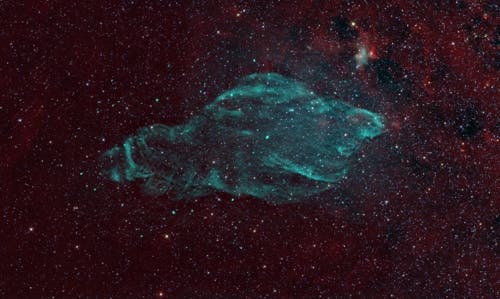The Very Large Array radio telescope network in New Mexico recently captured this amazing view of a 20,000 year old nebula that intriguing enough is shaped like a manatee – the famous and adorable sea cow native to the greater Gulf of Mexico – in its favorite position: floating on its back with its fins across its belly.

The nebula, initially named W50, was produced after a massive supernova exploded, but before the original star that formed it died, it “puffed out its outer gaseous layers, which now swirl in green-and-blue clouds around the dead hulk of the star, which has collapsed into a black hole,” according to the researchers. The nebula is actually one of the most massive the VLA has come across so far, spanning across 700 light years and covering two degrees on the sky (the equivalent of four full moons).
The astronomers believe the crushed relic of the past star now feeds on gas from a companion star, forming a stream of gas around the black hole that eventually births a disk of matter. The cannibalized disk of matter and the black hole together for a powerful network of magnetic field lines which grabs charged particles from the disk and channels them outward in powerful jets. This makes W50 shine brightly in both radio and X-rays, and all the better for us viewers.
The name W50 is rather boring, so considering its uncanny resemblance, the nebula was named Manatee Nebula. Besides, since this gorgeous animals is currently threatened by extinction, the astronomers thought they could pitch in to raise awareness. The biggest risk manatees face are the deadly encounters with boat propellers that carve deep wounds causing intense amount of pains, which most of the time prove fatal. As the Florida coastline develops even further, the manatee is at ever greater peril.
“Manatees are endangered, in part because boat propellers often cut deep gashes into the herbivores’ sides, injuring or killing many manatees every year. The nebula, too, bears streaky scars carved out by particles in the two protruding jets emitting from the black hole at its core,” the researchers write.
The findings were published in the journal PLoS.


